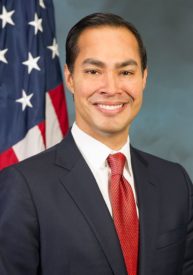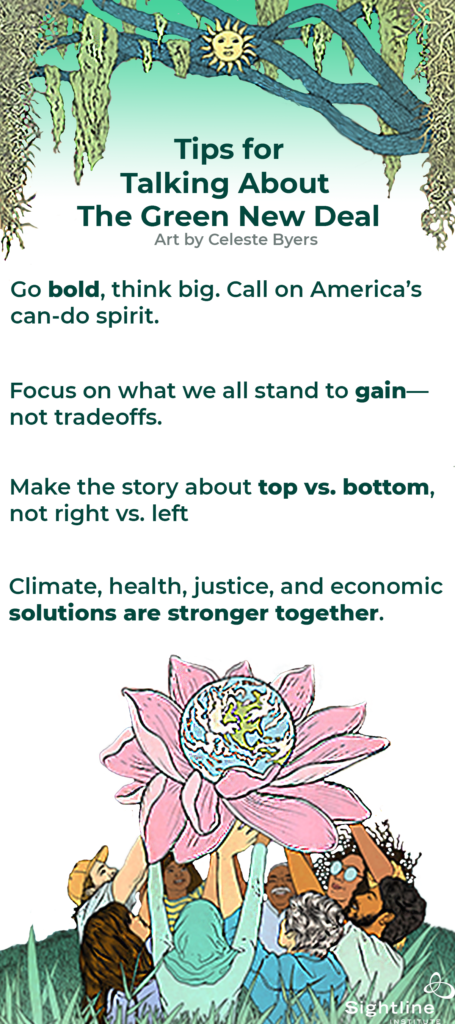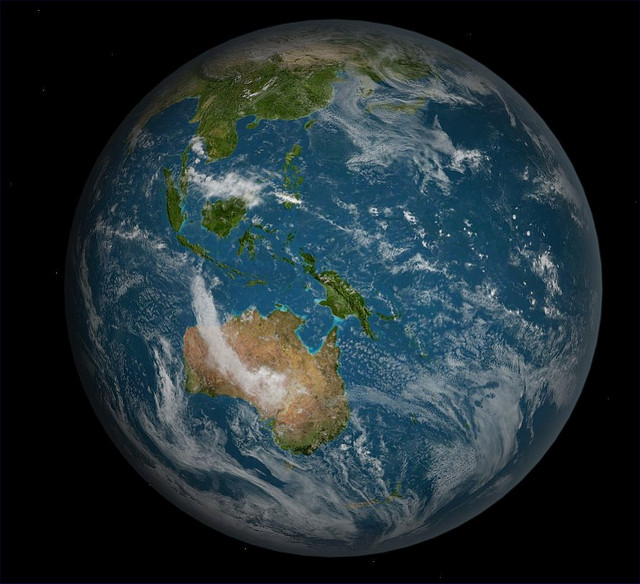[vc_row][vc_column][vc_column_text]As members of Congress take their seats, it seems the phrase “Green New Deal” is suddenly on the lips of every progressive-leaning politician and pundit. A reference to Franklin D. Roosevelt’s Depression-era stimulus package, we can thank the outspoken, headline-making, progressive freshman New York Representative Alexandria Ocasio-Cortez for unifying climate and racial justice advocates, and Democratic leaders from left to center around the idea. Even Libertarian think tank Niskanen Center supports the idea of a Green New Deal—with caveats, of course.
And it looks like American voters are ready for this kind of bold talk about solutions. New polling shows that almost three-quarters of Americans now think that climate solutions should be a higher priority. More than half—55 percent—of Americans support “giving every American who wants one a job, scaling up renewable energy, weatherizing homes and office buildings, developing mass transit projects, and maintaining green community spaces.” In other words, people want a green jobs guarantee, a defining characteristic of the Green New Deal.
An even louder signal comes from polling by the Yale Program on Climate Change Communication. After reading a brief descriptive paragraph about the policy, registered voters in the US support a Green New Deal at an eye-popping rate of 81 percent—including 64 percent of Republicans and 57 percent of Conservative Republicans.
So what would a Green New Deal actually look like? Ocasio-Cortez and Massachusetts Senator Ed Markey this month released a 14-page, non-binding resolution—with 60 co-sponsors—that lays out the GND blueprint:
…new national, social, industrial, and economic mobilization on a scale not seen since World War II and the New Deal era is a historic opportunity … to create millions of good, high-wage jobs in the United States; to provide unprecedented levels of prosperity and economic security for all people of the United States; and to counteract systemic injustices.
The plan is to transition the US economy to 100 percent clean energy within 10 years. The idea is to get to net-zero greenhouse gas emissions through a fair and just transition for all communities and workers. The audacious resolution aims to create “millions of good, high-wage jobs,” with a commitment to promote justice and equity, and repair harm in the process. In particular, those most vulnerable to climate change and pollution—communities of color, indigenous peoples, migrants, rural communities, the poor, people with disabilities, the elderly, and young people.
There are questions and flaws and, of course, plenty of naysayers. And this kind of package is not a new idea. But the groundswell of support distinguishes this moment as something potentially bigger, more powerful, more unifying. And a big part of the buzz is about how proponents are talking about it. As Julian Brave NoiseCat, a policy analyst for the climate group 350.org and a Guardian contributor put it:
Climate change and climate policy has been framed through tradeoffs, scarcity and sacrifice for so long. But what’s powerful about the Green New Deal is it frames it as: “We can build and provide millions of jobs and do phenomenal things for everyday people through climate policy.”
The story is more bold and upbeat. The message is clear: We can address the double threat of economic inequality and climate disruption, making the nation stronger and the lives of everyday Americans better in the bargain. The idea is to go all-in and lift up those who’ve been left out. And public attitudes have shifted.
As Climate Access experts point out, while media coverage and critics are heightening partisan divisions, many of the Green New Deal’s policy goals transcend political divisions. There’s broad popular support—across party lines—for infrastructure improvements, energy efficiency, and job training. Focus on these shared benefits beats the partisan rhetoric and helps combat the “solution aversion” that can hogtie solutions.
Building on Climate Reality and Climate Access messaging tips and taking cues from Green New Deal superstars, here’s our cheat sheet for talking about this kind of bold, far-reaching climate solution:[/vc_column_text][/vc_column][/vc_row][vc_row][vc_column width=”1/4″][vc_column_text]

[/vc_column_text][/vc_column][vc_column width=”3/4″][vc_column_text]
Go bold, think big. Call on America’s can-do spirit.
“This is going to be the Great Society; the moon shot; the Civil Rights Movement of our generation… It’s not just possible that we will create jobs and economic activity by transitioning to renewable energy, it’s inevitable.” —Alexandria Ocasio-Cortez[/vc_column_text][/vc_column][vc_column][vc_separator][/vc_column][/vc_row][vc_row][vc_column width=”2/3″][vc_column_text]
Focus on what we all stand to gain—not tradeoffs.
“Don’t let anyone tell you that we have to choose between growing our economy and protecting our planet. We can fight climate change and create great jobs here in America.” —Julian Castro[/vc_column_text][/vc_column][vc_column width=”1/3″][vc_column_text]

[/vc_column_text][/vc_column][vc_column][vc_separator][/vc_column][/vc_row][vc_row][vc_column width=”1/4″][vc_column_text]

[/vc_column_text][/vc_column][vc_column width=”3/4″][vc_column_text]
Make the story about top vs. bottom, not right vs. left.
“It’s clear that any politician who wants to be taken seriously by our generation needs to have the courage to stand up to the fossil fuel billionaires and back a Green New Deal.”—Varshini Prakash, co-founder of Sunrise Movement[/vc_column_text][/vc_column][vc_column][vc_separator][/vc_column][/vc_row][vc_row][vc_column width=”2/3″][vc_column_text]
Climate, health, justice, and economic solutions are stronger together.
“For the sake of the ship–our planet–and all aboard it, the effort to go green must be all hands on deck. We can take the unfinished business of America on questions of inclusion and equal opportunity and combine it with the new business of building a green economy, thereby healing the country on two fronts and redeeming the soul of the nation. We must.”—Van Jones[/vc_column_text][/vc_column][vc_column width=”1/3″][vc_column_text]

[/vc_column_text][/vc_column][/vc_row][vc_row][vc_column][vc_separator][/vc_column][/vc_row][vc_row][vc_column][vc_column_text]

[/vc_column_text][/vc_column][/vc_row]


Comments are closed.